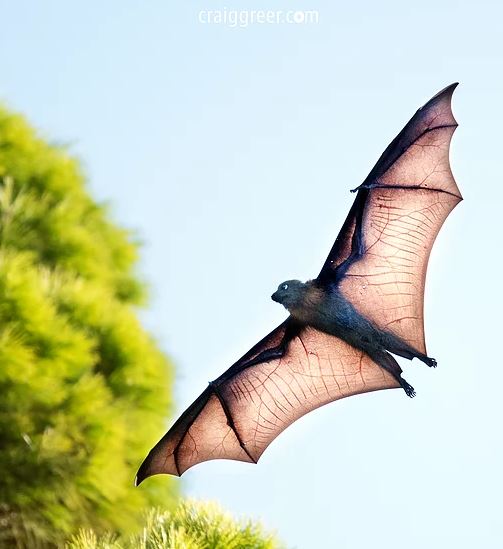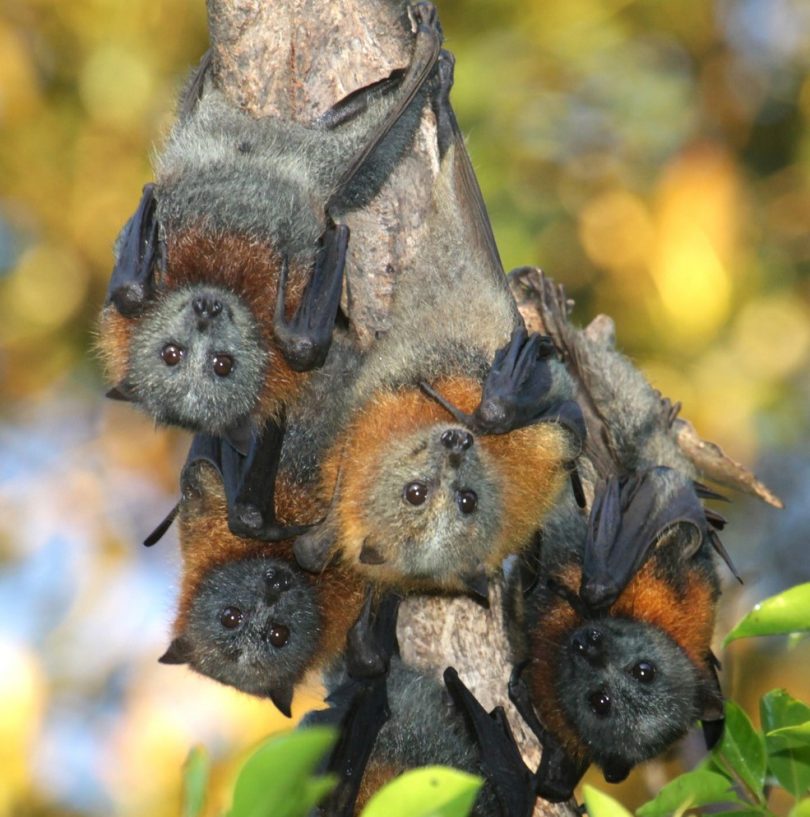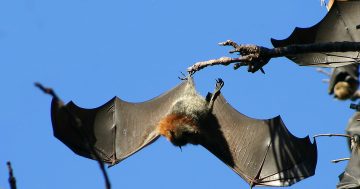
Flying Fox. Photo: Craig Greer
The Eurobodalla’s relationship with Flying Foxes is again up for discussion as Eurobodalla Shire Council moves ahead with it’s Flying Fox Management Plan.
The draft plan is open for public comment until the end of October and has been informed by a recent online survey, interviews, and workshops with stakeholders and residents.
Central to this work and discussion is the experience of 2016 when 100,000 flying foxes set up a camp around the Batemans Bay Water Gardens and Catalina Golf Club, right in the heart of town.
At the time it was estimated that 20% of Australia’s total flying fox population was in Batemans Bay, drawn to the region by a flush of Spotted Gum flowering in the forests that surround the Eurobodalla.
The noise, the smell, the intensity of the situation was described as a natural disaster and prompted a $2.5 million dispersal plan, which included smoke, loud noise, flashing lights, and vegetation clearing.
Council commissioned a report to detail residents’ experiences and engaged consultants Ecosure to prepare the draft Eurobodalla Flying Fox Management Plan.
Four hundred and ninety-two (492) people responded to the online survey earlier this year.
Responses were received from 38 suburbs across the Shire, almost two thirds (64%) were from the northern part of the Shire, with Batemans Bay (14%) and Catalina (10%) recording the highest number of responses.
A total of 75 respondents indicated they lived within 300 metres of a camp, most of whom lived near a camp in the northern part of the Shire. A further 74 respondents indicated flying-foxes roost in trees within 50 metres of their home or business.
One-third of the community hold consistently negative attitudes towards flying-foxes, and about half hold consistently positive attitudes. Levels of agreement and disagreement tended to be higher for respondents living or working within 300 metres of a camp.
Impacts of most concern included; noise (68%), faecal droppings (54%), and smell (53%). Followed by damage to infrastructure such as power lines (37%), risk of disease (33%), and damage to vegetation from flying foxes roosting in trees (31%), eating fruit and flowers (23%), inability to access areas where flying foxes camp (22%), and aircraft strikes (19%).
“Ultimately, the respondents seek a long-term, dual-pronged environmental management and land-use planning solution that aims to encourage flying foxes to set up camps away from Eurobodalla’s central urban areas,” says Council’s Divisional Manager Environmental Services Deb Lenson.
The full community engagement report is available on Council’s website.

Council is asking for the community’s input in the Shire’s Flying Fox Management Plan. Photo: Eurobodalla Shire Council.
Council says its newly released draft Eurobodalla Flying Fox Management Plan draws on the experiences of those impacted by flying foxes in recent years while balancing the needs of a threatened species.
A primary focus of the plan is minimising impacts of flying foxes on people within 300 metres of a camp.
Management options range from monitoring and education and awareness programs to subsidies for things like pressure cleaning, car covers, clothesline covers and Cocos Palm removal.
Removing vegetation to provide a buffer zone between roosting flying foxes and residents or businesses, similar to what took place at the Batemans Bay Water Gardens in 2016, might be an option in some circumstances, and in extreme circumstances, dispersal would be considered on council-managed land.
All management activities would be in accordance with animal welfare and legislative requirements.
The plan notes that flying foxes will continue to return to the area and that favourable habitat and food resources across the Shire mean camps could establish in new locations, including urban areas.
Ms Lenson says a recent study of 310 national camps found 72 per cent were in urban areas.
“This issue poses ongoing impacts on urban communities throughout Australia,” she says.
“Managing wildlife in a changing environment is complex and unfortunately unpredictable.
“The draft plan aims to help us better manage this complex issue by providing Council with a framework of staged management and mitigation options, giving residents some certainty as to how current and future camps are likely to be managed,” Ms Lenson says.

In 2016 20% of Australia’s flying fox population “camped out” in Batemans Bay. Photo: Eurobodalla Shire Council.
The draft plan has been approved by Councillors with community feedback and submissions invited until October 31.
Council says it will continue to seek advice from the NSW and Australian governments and flying fox experts across the country, as well as take part in research.
The draft Eurobodalla Flying Fox Management Plan is available on Council’s website or as hard copy at Eurobodalla libraries, the Batemans Bay Community Centre, and the Customer Service Centre in Moruya.















